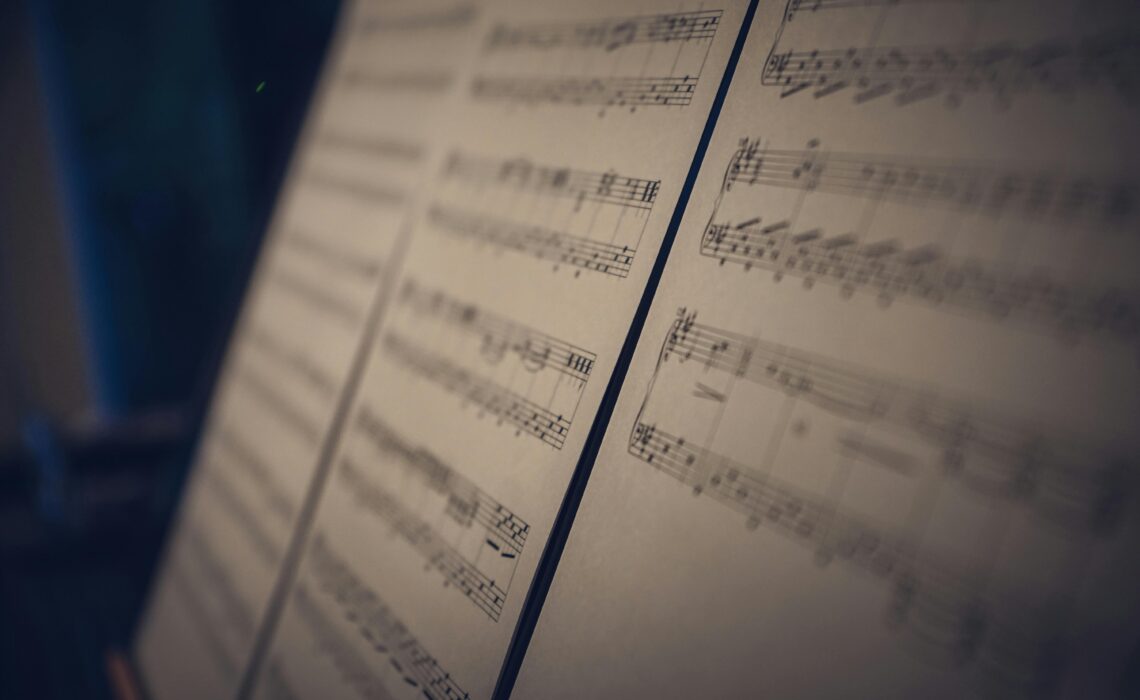
Music theory for songwriters is simple and fun. Although it often gets a bad rap, it has the potential to severely boost your songwriting prowess. After all, understanding the basics of music theory is like having a key to unlock the doors of creativity. In this article, we will delve into the fundamental elements of music theory that every songwriter should know to craft compelling melodies and harmonies.
The Language of Music: Notes and Rhythm
At the core of music theory are two essential elements: notes and rhythm.
Firstly, notes are the building blocks of melody and harmony. In Western music, there are 12 distinct notes, represented by letters from A to G with sharps (#) and flats (b) in between. These notes are organized in a repeating pattern known as the chromatic scale. Familiarize yourself with these notes, and you’ll be well on your way to creating melodies.
Second, we have the rhythm or the heartbeat of a song. It’s the timing, duration, and arrangement of musical sounds. Common rhythmic values include whole notes, half notes, quarter notes, eighth notes, and sixteenth notes. Understanding rhythm allows you to craft engaging and catchy patterns that define your song’s groove.
Scales and Keys
Scales and keys are the foundation of melody and harmony. A scale is a sequence of notes that form a musical language, while a key establishes a tonal center for a piece of music. The two most common scales are the major and minor scales.
For instance, the major scale is bright and happy. It follows a specific pattern of whole and half steps (W-W-H-W-W-W-H), which gives it its distinct sound. The notes of a C major scale, for example, are C, D, E, F, G, A, and B.
On the other hand, the minor scale has a more melancholic and pensive quality. It also follows a pattern of whole and half steps (W-H-W-W-H-W-W), resulting in a unique set of notes for each minor key. The notes of an A minor scale, for instance, are A, B, C, D, E, F, and G.
Chords and Chord Progressions
This is the bread and butter of songwriting. Firstly, chords are the building blocks of harmony, and chord progressions are the structural framework of songs. There are three main types of chords: major, minor, and dominant (or seventh) chords.
A major chord is formed by playing the first, third, and fifth notes of a major scale. In C major, this results in a C major chord (C-E-G). It has a happy and bright sound.
On the other hand, a minor chord consists of the first, third (flattened), and fifth notes of a minor scale. For A minor, you’d play A-C-E. It conveys a sadder or more introspective mood.
Finally, the other very common chord for songwriters are dominant chords. These add tension to your music and are often used to lead to a resolving chord. In C major, the G7 chord (G-B-D-F) is a dominant chord leading to the C major chord (the I chord).
Naturally, there are many more different types of chords. However, major, minor, and dominant are the most used in contemporary songwriting. Other types of chords like diminished, augmented, extended, Lydian, Phrygian, etc tend to be associated with other styles like jazz and classical music.
Additionally, we also have chord progressions. These are sequences of chords that form the harmonic structure of a song. Experiment with different progressions to create a unique musical identity for your composition. In short, chords and progressions are an essential tool for music theory for songwriters.
Song Structure
Understanding song structure is crucial for creating a song that flows smoothly. While there are no strict rules, many songs follow popular structures such as AABA (verse-verse-chorus-verse) or ABAB (verse-chorus-verse-chorus). These structures provide a sense of balance and familiarity to listeners.
Song structure has a strong impact on the overall feel of the song. For instance, some songwriters choose to start with the chorus. This can work nicely if you have a hooky chorus that grabs the listener. On the other hand, the most common choice is to start with a verse.
Dynamics and Expression
Dynamics refer to the volume or intensity of your performance. Using dynamic markings, such as crescendo (getting louder) and decrescendo (getting softer), adds depth and emotion to your song. Expressive notations like legato (smooth) and staccato (short, detached) help convey your musical ideas to the performer or reader of your sheet music.
Although dynamics and expression are paramount, they are often ignored by songwriters. This may be partly because these parameters tend to get set during production. In any case, keep them in mind as these are also powerful tools.
Practical Tips for Songwriters
- Modulation: Experiment with changing keys within your song to add variety and emotional depth. Modulation may be considered by some as a more advanced concept. However, it simply means changing keys, especially for the bridge section.
- Chromaticism: Introduce chromatic notes (notes outside the scale) to create tension and interest. Although chromaticism is a staple of jazz and classical music, it fits as a good option for music theory for songwriters.
- Melodic and Harmonic Variation: Vary your melodies and harmonies to keep your song engaging. This is especially true between sections, in order to increase contrast.
- Lyric-Melody Harmony: Align the emotional content of your lyrics with your melody and harmony for a powerful connection with your audience.
Music theory is a valuable tool that empowers songwriters to express themselves effectively. While this article covers the basics, there is an entire world of musical knowledge waiting to be explored. As you embark on your songwriting journey, remember that creativity knows no bounds. Experiment, make mistakes, and most importantly, let your passion guide you. With a solid foundation in music theory, you’ll be well-equipped to craft songs that resonate with your audience and stand the test of time. So, let the magic of melody and harmony inspire you to create your musical masterpieces. Until next time.


